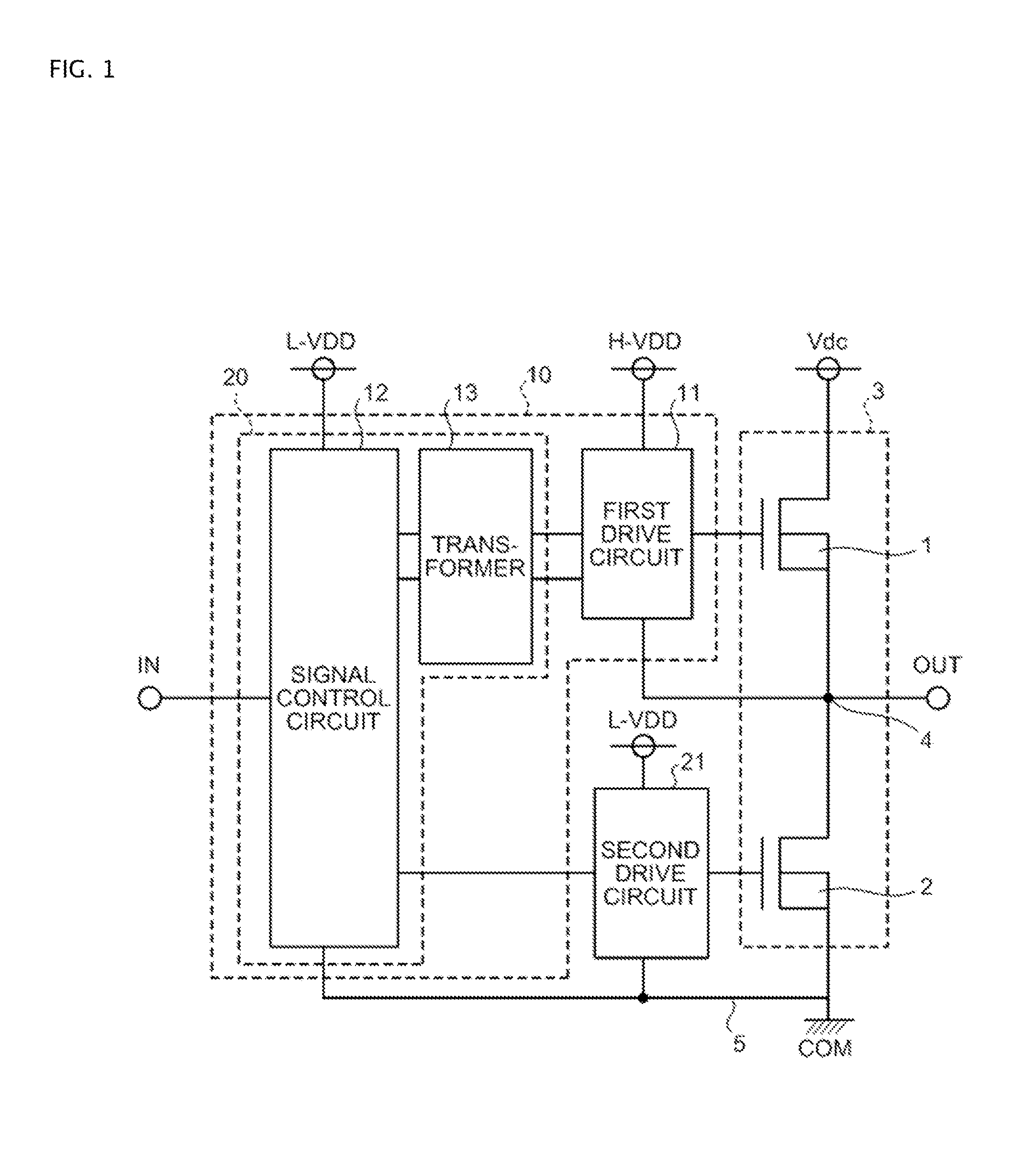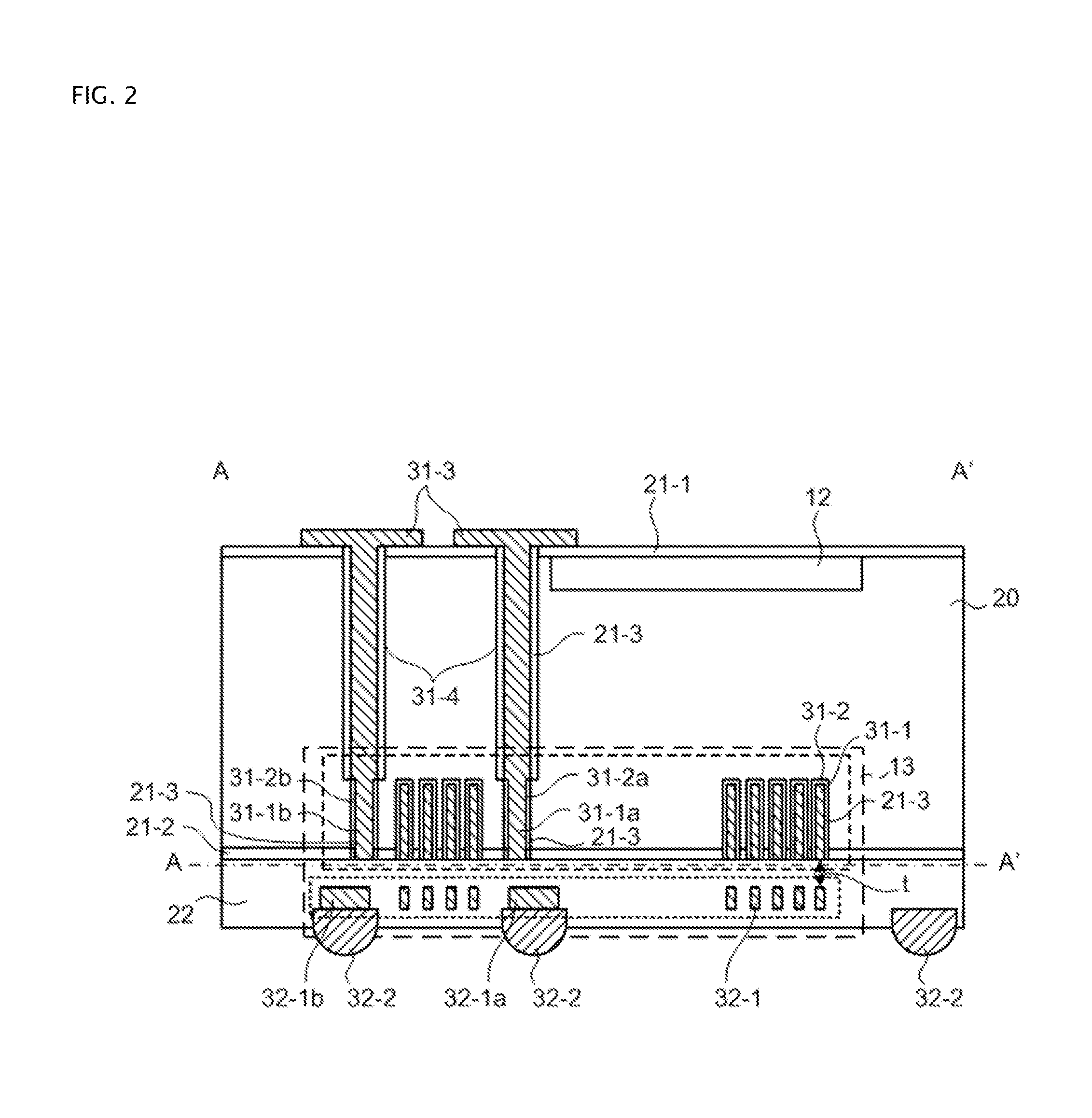Isolator and isolator manufacturing method
a manufacturing method and isolation technology, applied in the direction of fixed transformers or mutual inductances, semiconductor/solid-state device details, analog circuits affected by digital noise, etc., can solve the problems of inability to manufacture photocouplers on semiconductor substrates by general integrated circuit (ic) process, integrated with transmission circuits, etc., to reduce the dc resistance of the primary coil, reduce the cross-sectional area of the primary coil, reduce the effect of coil-induced magnetic effects on the transmission circui
- Summary
- Abstract
- Description
- Claims
- Application Information
AI Technical Summary
Benefits of technology
Problems solved by technology
Method used
Image
Examples
first embodiment
[0054]FIG. 1 is a block diagram depicting an example of an overall configuration of a semiconductor device to which an isolator according to a first embodiment is applied. An example of an overall configuration of a semiconductor device to which the isolator according to the present invention is applied will be described. The semiconductor device depicted in FIG. 1 is configured by a bridge circuit 3 configured by a first metal-oxide-semiconductor field effect transistor (MOSFET) 1 and a second MOSFET 2; an isolator 10 that includes a first drive circuit 11 that drives the first MOSFET 1 of the upper arm; and a second drive circuit 21 that drives the second MOSFET 2 of the lower arm.
[0055]The bridge circuit 3 is an external-output circuit that via a connection point 4 of the source of the first MOSFET 1 and the drain of the second MOSFET 2, outputs a signal from an output terminal OUT to an external destination. The drain of the first MOSFET 1 of the upper arm is connected to source...
second embodiment
[0091]FIG. 15 is a schematic cross sectional view of the isolator according to a second embodiment. The isolator 100 according to the second embodiment differs from the isolator according to the first embodiment in that the bump electrodes 32-2 of the transformer mounted chip 20 are directly connected to the terminals 51 of the reception circuit 11 of the signal reception chip 50. In other words, in the second embodiment, the connection of the secondary coil 32-1 disposed on the transformer mounted chip 20 and the reception circuit 11 disposed on the signal reception chip 50 does not use bonding wire.
[0092]The signal reception chip 50 is joined to an anterior surface of a mounting substrate 70 formed by the insulating substrate, a posterior surface thereof being regarded as the mounting substrate 70 side. The transformer mounted chip 20, with the posterior surface being regarded as the signal reception chip 50 side, is placed on the anterior surface of the signal reception chip 50. ...
third embodiment
[0094]FIG. 16 is a block diagram of an example of an overall configuration of a semiconductor device to which the isolator according to a third embodiment is applied. An isolator 110 according to the third embodiment differs from the isolator according to the first embodiment on the following 2 points. The first difference is that in the basic circuit unit of the signal control circuit (hereinafter, first signal control circuit) 121, not just the transmission circuit, but also a reception circuit that receives a signal from another signal control circuit (hereinafter, second signal control circuit) 122 is configured therein. The second difference is that in place of the first drive circuit, the second signal control circuit 122 and a second transformer 123 are further included, and an upward level-shifting function and a downward level-shifting function are implemented by 2 transformers, the first and the second transformers 13, 123, disposed in the isolator 110.
[0095]As depicted in...
PUM
 Login to View More
Login to View More Abstract
Description
Claims
Application Information
 Login to View More
Login to View More - R&D
- Intellectual Property
- Life Sciences
- Materials
- Tech Scout
- Unparalleled Data Quality
- Higher Quality Content
- 60% Fewer Hallucinations
Browse by: Latest US Patents, China's latest patents, Technical Efficacy Thesaurus, Application Domain, Technology Topic, Popular Technical Reports.
© 2025 PatSnap. All rights reserved.Legal|Privacy policy|Modern Slavery Act Transparency Statement|Sitemap|About US| Contact US: help@patsnap.com



